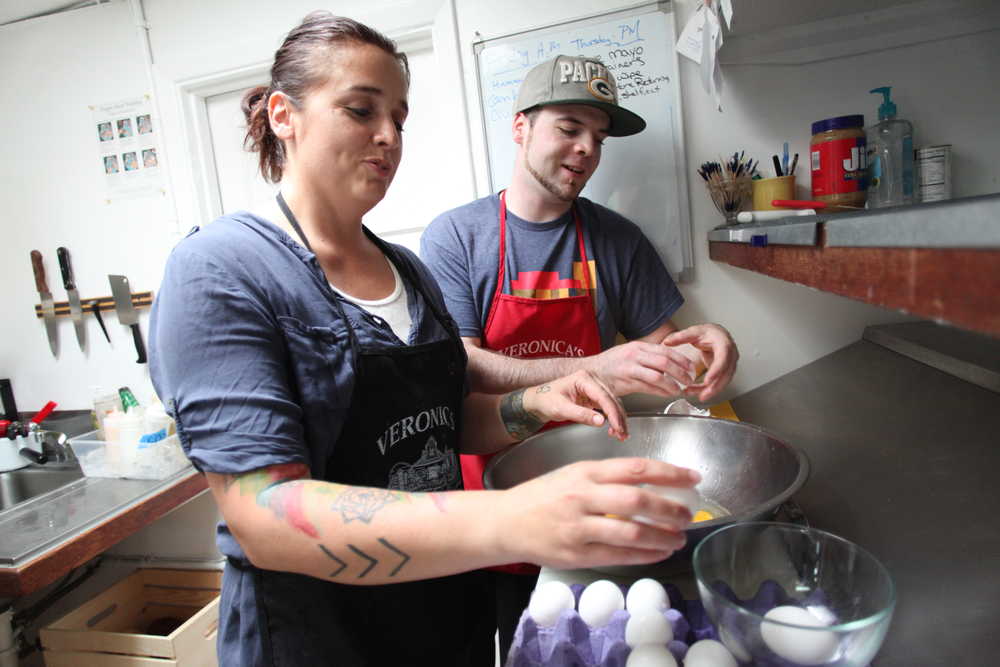Egg prices have shot up across the central Kenai Peninsula within the past month, causing concern for local sellers and buyers.
The increase is due to a massive loss of laying hens in Lower 48 poultry operations. Nearly 50 million chickens have succumbed to the largest outbreak of avian influenza to hit the industry, or were slaughtered to prevent further spread of the disease.
In his 24 years working as manager at Country Foods IGA, Chris Duncan said he has never seen such a dramatic price increase for eggs across the board. The lack of producing birds affects the price of a dozen eggs, the flats that contain 15 dozen for food service or 30 dozen for retail, he said.
Duncan has watched buyers’ egg bills double in only one month. It’s “supply and demand,” he said. The same number of people want eggs, but there are fewer available.
Shannon Darling, the new owner of Veronica’s Coffee House, said she noticed the increase, but at this point isn’t hurting business. The store goes through roughly 60 to 90 eggs every day that go into quiches, breads and baked goods.
Veronica’s cook Nita Jackson said at least one meal during breakfast, lunch and dinner time requires eggs.
One consequence is that now Darling buys her flats from Walmart, which has kept prices down to $9, whereas other grocery stores have sold them for as much as $40 per flat. She said she would prefer to buy from local suppliers.
“I don’t think they (Walmart) are making any money,” Darling said. “I think they are just doing it to bring people inside the store.”
If low prices are not an option, Darling said she would more than likely need to raise prices for menu items that contain eggs.
Three Bears Store Manager Joe Dennis said the cost of buying eggs to stock the store has gone down since December, but the store purchases eggs from Costco, another international chain that has kept prices down despite the lack of producing hens.
Shelled eggs and breaker eggs, which are produced specifically for liquid eggs, lost 10 percent of the entire U.S. industry’s flock, said Alaska State Veterinarian Robert Gerlach. The U.S. turkey flock lost 7 to 8 percent and 6 percent of pullet flock, which are the chickens bred to replace the actively laying hens, but are still too young to produce, he said.
The U.S. is a major exporter of poultry and poultry products, but with the recent outbreak major buyers like China and other Asian countries have imposed bans on imports, which has the potential to change the face of the industry, Gerlach said.
The price of chicken meat products hasn’t gone up much because less than 1 percent of the U.S. population of broiler flocks used to produce whole chickens and chicken parts has been affected by the outbreak, Gerlach said.
Executive Director for the Kenai branch of the Alaska Farm Bureau Amy Seitz explained laying hens are usually used only for that purpose and are too old to eat by the time they are slaughtered.
Reach Kelly Sullivan at kelly.sullivan@peninsulaclarion.com.

